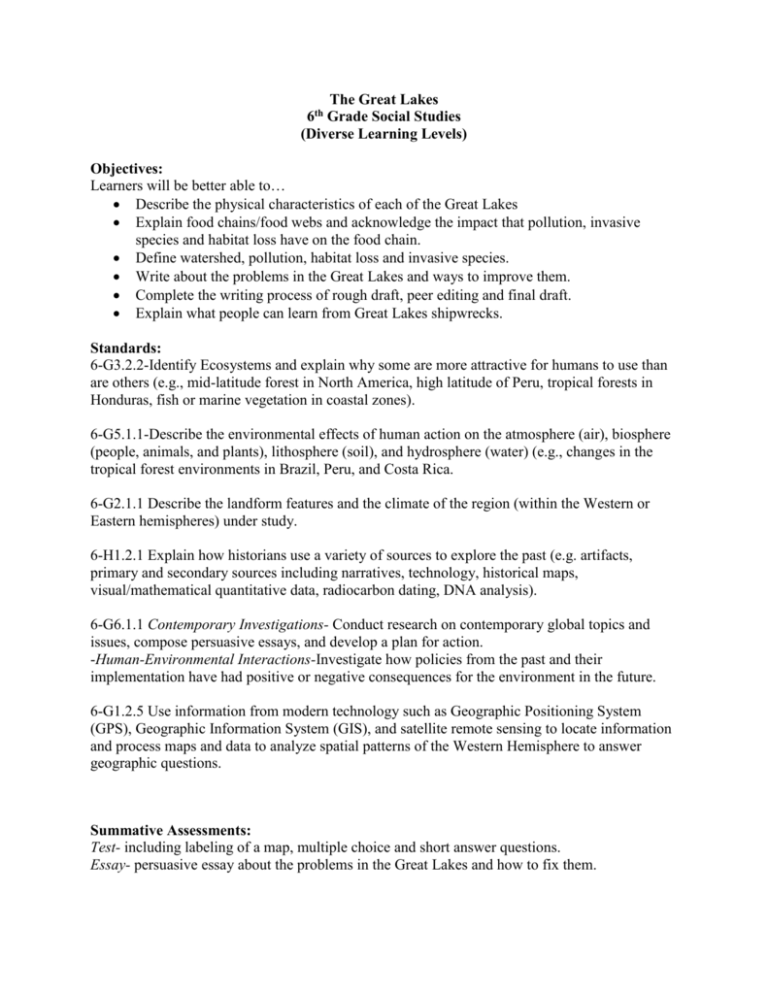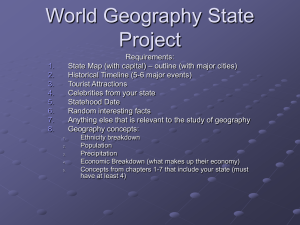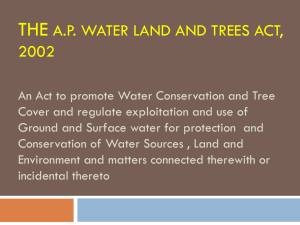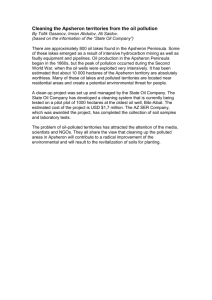The Great Lakes 6th Grade Social Studies (Diverse Learning Levels
advertisement

The Great Lakes Grade Social Studies (Diverse Learning Levels) 6th Objectives: Learners will be better able to… Describe the physical characteristics of each of the Great Lakes Explain food chains/food webs and acknowledge the impact that pollution, invasive species and habitat loss have on the food chain. Define watershed, pollution, habitat loss and invasive species. Write about the problems in the Great Lakes and ways to improve them. Complete the writing process of rough draft, peer editing and final draft. Explain what people can learn from Great Lakes shipwrecks. Standards: 6-G3.2.2-Identify Ecosystems and explain why some are more attractive for humans to use than are others (e.g., mid-latitude forest in North America, high latitude of Peru, tropical forests in Honduras, fish or marine vegetation in coastal zones). 6-G5.1.1-Describe the environmental effects of human action on the atmosphere (air), biosphere (people, animals, and plants), lithosphere (soil), and hydrosphere (water) (e.g., changes in the tropical forest environments in Brazil, Peru, and Costa Rica. 6-G2.1.1 Describe the landform features and the climate of the region (within the Western or Eastern hemispheres) under study. 6-H1.2.1 Explain how historians use a variety of sources to explore the past (e.g. artifacts, primary and secondary sources including narratives, technology, historical maps, visual/mathematical quantitative data, radiocarbon dating, DNA analysis). 6-G6.1.1 Contemporary Investigations- Conduct research on contemporary global topics and issues, compose persuasive essays, and develop a plan for action. -Human-Environmental Interactions-Investigate how policies from the past and their implementation have had positive or negative consequences for the environment in the future. 6-G1.2.5 Use information from modern technology such as Geographic Positioning System (GPS), Geographic Information System (GIS), and satellite remote sensing to locate information and process maps and data to analyze spatial patterns of the Western Hemisphere to answer geographic questions. Summative Assessments: Test- including labeling of a map, multiple choice and short answer questions. Essay- persuasive essay about the problems in the Great Lakes and how to fix them. Rationale: This unit on the Great Lakes will be instituted in a 6th grade class located in Michigan. From this perspective, the topic of the Great Lakes is vital to the education of these students due to their proximity to the Great Lakes. Students should not only learn of the geography of the world and ‘far off’ places, but it is also important to look in ‘their own backyard’ in order to fully realize their geographical place in the world. Through this unit, students can learn to take pride in their home and also realize how vital their surroundings are to not only the United States, but the rest of the world as well. As 21% of the fresh water in the world, the Great Lakes hold a prominent place on the globe (http://www.epa.gov/greatlakes/basicinfo.html). In addition, this unit covers topics such as habitat loss and ecosystems that are concepts and trends found all over the world and are also interdisciplinary subjects integrating together science and social science. Through these topics, students will be able to enhance their knowledge of science and social studies in both classes while creating connections and links between their studies. This unit continues on this interdisciplinary path by integrating reading and writing as well. Students will read not only the textbook for this course, Geography Alive! Regions and People, but they will also read online articles about the Great Lakes. The final project, will be an essay in which students describe problems in the Great Lakes and ways to fix them. Students will work on their writing skills by completing a rough draft, going through a peer editing session and writing a final draft. Students will continue to work on their map literacy through examination of nautical charts. Working with maps will be a form of procedural knowledge as students work on ‘how to’ interpret maps and ‘how to’ use those interpretations to construct a larger picture and make connections. In addition, this unit covers many of the Michigan Grade Level Content Expectations. Resources: Council for Environmental Education and the Western Association of Fish and Wildlife Agencies. Project Wild: K-12 Curriculum & Activity Guide. USA: Council for Environmental Education, 2010. Print. Hart, Diane and the Teachers’ Curriculum Institute. Geography Alive! Regions and People. Palo Alto, CA: Teachers’ Curriculum Institute, 2006. Hart, Diane and the Teachers’ Curriculum Institute. Geography Alive! Regions and People. (Student Workbook) Palo Alto, CA: Teachers’ Curriculum Institute, 2006. Nautical Charts, Ex: National Oceanic and Atmosphere Administration, U.S. Department of Commerce. “Lake Michigan.” Polyconic Projection “Exploring Shipwrecks.” Underwater Archaeology Kids’ Corner. Wisconsin Historical Society. n.d. Web. October 2011. http://www.wisconsinhistory.org/shipwrecks/kids/exploring.asp “Great Lakes Food Web Diagrams.” NOAA Great Lakes Environmental Research Laboratory. 13 July 2009. Web. October 2011. http://www.glerl.noaa.gov/res/projects/food_web/food_web.html (Lakes Huron, Ontario, Michigan, Erie, Superior) Weebly. Weebly.com. 2011. Web. 4 October 2011. http://www.weebly.com/ *Other websites used for WebQuest, to show videos and for images can be found within lesson plans. Travel Guides were bought in as an example for a guide book.








